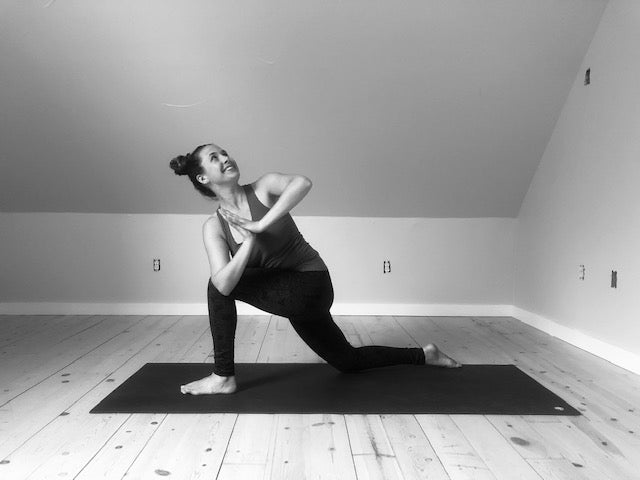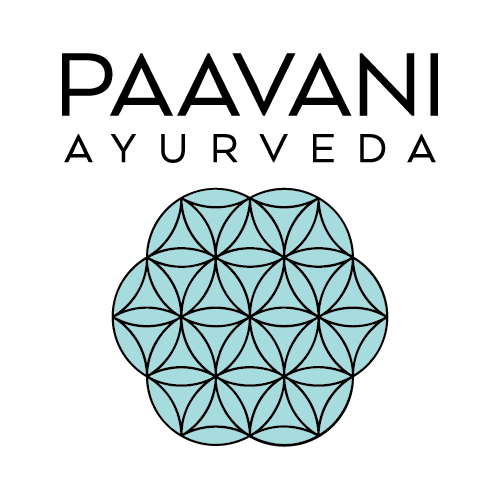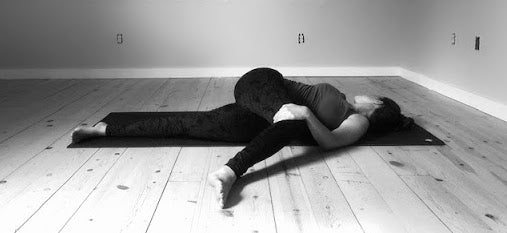
Parivrtta Anjaneyasana: An Ayurvedic Guide to Revolved Crescent Lunge

Parivrtta Anjaneyasana, or Revolved Crescent Lunge, is a twisting variation of Anjaneyasana, or Crescent Lunge Pose. There are many variations on this posture and below we explore two. This posture strengthens the quadriceps and gluteus muscles and increases stamina. It stretches the psoas muscles and hips. It also detoxifies the body, improving digestion and elimination. Lastly, it builds internal heat in the body.
This posture is beneficial for all doshas:
Vata- If you are working to balance vata, focus on the grounding, stabilizing benefits of this posture.
Pitta- If you are working to balance pitta, concentrate on the detoxifying action of the twist and imagine, in your mind’s eye, wringing out excess heat and toxins in the organs.
Kapha- If you are working to balance kapha, do not shy away from the challenge of this pose. Instead, sit with the heat that builds through the body and hold the posture, even when you feel like coming out of it.
How to Do Parivrtta Anjaneyasana, Variation 1:

- From Downward Facing Dog, inhale and step the right foot forward with the right knee directly over the right ankle and simultaneously lower the left knee to the floor and bring the palms to prayer at the heart center.
- Exhale, twist towards the right leg and place the left tricep on the right thigh.
- Press your palms together to help engage the arms and open more fully into the twist.
- If possible, bring your gaze upward and over your right shoulder.
- Stay here and take 5 rounds of breath OR tuck the left toes and lift the left knee up and away from the ground for an extra challenge.
- If the left knee is off the floor, lower it back down.
- Untwist from the posture and plant the hands to the floor.
- Step back into Downward Facing Dog.
- Repeat this series on the opposite side.
How to Do Parivrtta Anjaneyasana, Variation 2:

- From Downward Facing Dog, inhale and step the right foot forward with the right knee directly over the right ankle and simultaneously lower the left knee to the floor.
- Plant the left palm onto the floor, parallel with the right foot.
- Inhale and twist to the right, simultaneously extend the right arm up to the sky.
- Stay here and take 5 rounds of breath OR turck the left toes and lift the left knee up and away from the ground for an extra challenge and to release the psoas muscle.
- Press the left heel towards the back, lift up through the left thigh, stay long in the spine and reach the crown of the heads forward to maintain a long line of energy throughout the body.
- If the left knee is off the floor, lower it back down.
- Untwist from the posture and bring the right hand back down to the floor.
- Step back into Downward Facing Dog.
- Repeat this series on the opposite side.
Precautions:
Contraindications for Parivrtta Anjaneyasana:





2 comments
@A.P. Yes! This posture helps to stimulate and stoke samana vayu; therefore, it also can help improve digestion and elimination.
PAAVANI Ayurveda
Pl advise Parivratta Anjaneyasana helps in Stimulating Samana Vayu?
AP.Ravichandran
Leave a comment
This site is protected by hCaptcha and the hCaptcha Privacy Policy and Terms of Service apply.